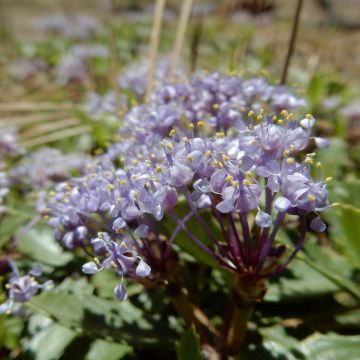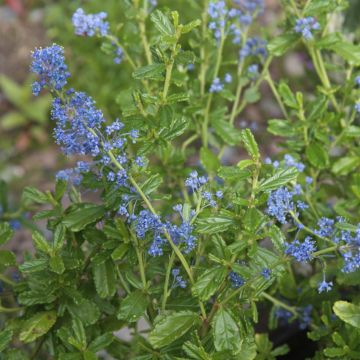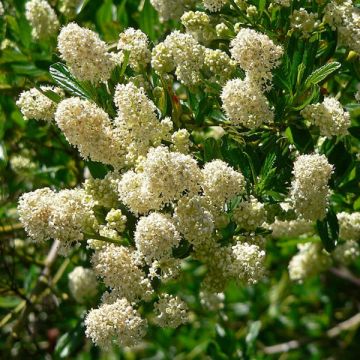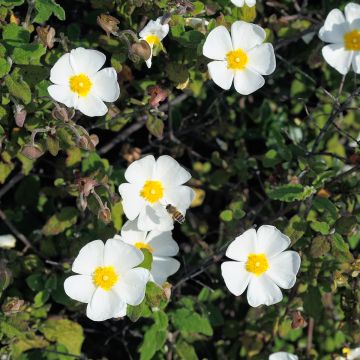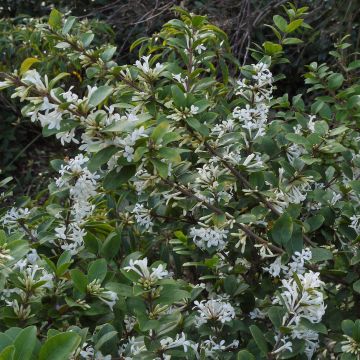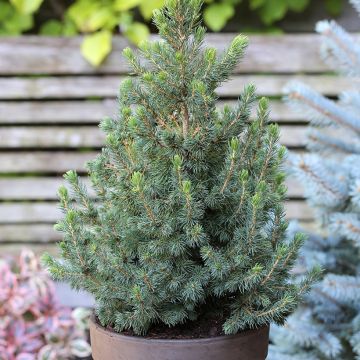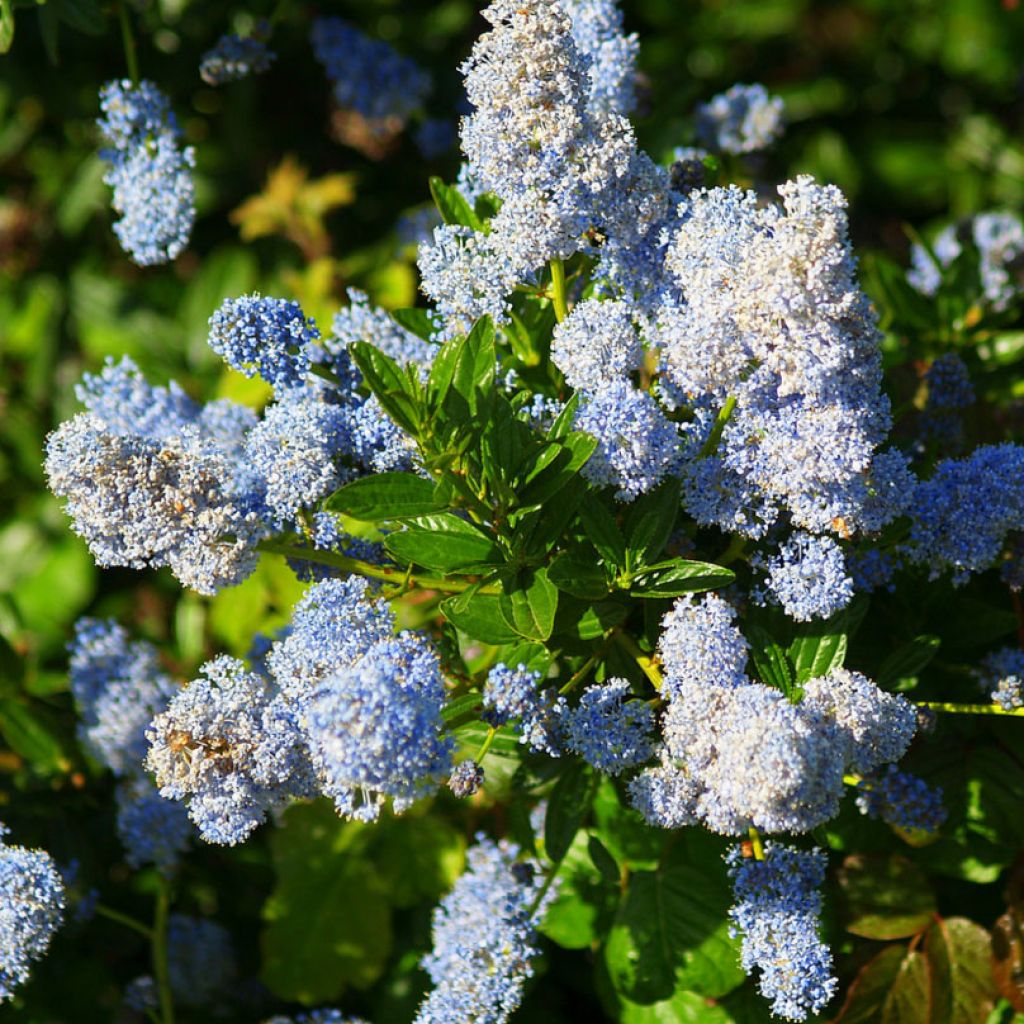

Ceanothus arboreus Concha
Ceanothus arboreus Concha
Ceanothus x arboreus Concha
California Lilac
The plant arrived in bloom and in very good condition, I transplanted it immediately. It seems to be thriving and I am looking forward to seeing it develop.
andree, 24/03/2024
Why not try an alternative variety in stock?
View all →This plant carries a 24 months recovery warranty
More information
We guarantee the quality of our plants for a full growing cycle, and will replace at our expense any plant that fails to recover under normal climatic and planting conditions.
From €5.90 for pickup delivery and €6.90 for home delivery
Express home delivery from €8.90.


Does this plant fit my garden?
Set up your Plantfit profile →
Description
Ceanothus Concha is a magnificent variety of evergreen ceanothus, a Californian lilac that is quite hardy and not very demanding of soil type, offering abundant and fragrant flowering in a particularly dark blue. This large bush with a very rounded habit blooms in spring, with decorative red-violet buds that open into numerous clusters of deep blue flowers, almost overshadowing its beautiful shiny dark green foliage. Tolerant of sun and drought, it ages better in poor and light soils and prefers regions with mild winters.
The Concha ceanothus is a horticultural hybrid, probably resulting from the cross-breeding between C. impressus and C. papillosus, two botanical species native to California. Ceanothus belong to the Rhamnaceae family, they are cousins of our buckthorn (Frangula alnus), growing in scrub vegetation, which can rely on rainwater once established.
The 'Concha' variety has a bushy and flexible habit; it is a beautiful bush that can reach 2.50m (8ft 2in) to 3m (9ft 10in) in all directions. Its pretty, reddish flower buds appear in March-April, at the ends of the branches, mixing in April-May with dense panicles of fully bloomed intense blue flowers, giving an overall impression of purple-violet. This fragrant flowering attracts many pollinating insects. It is followed by the formation of seeds which are explosively released. The evergreen foliage is composed of small alternate, elongated and finely toothed leaves, shiny dark green and 1 to 3cm (0.4 to 1.2in) long. This variety tolerates pruning. Its average lifespan is 15 to 20 years, and it prefers a maritime climate.
Because the demand for blue blooms continues, horticulturists have 'invented' new varieties of ceanothus in recent years, that are easier to acclimatize and of more modest size, adapted to our gardens and terraces. With good hardiness down to -10°C/-12°C (10.4°F) in well-drained soil and tolerating slightly chalky soils if they are light, the Concha ceanothus is a magnificent subject to plant in isolation, or in a mass of easy-to-grow shrubs which will precede or take over from its magnificent flowering: the Buddleia officinalis (pale pink, from February), the Fremontodendron californicum (in April-May-June), the shrubby cistus (Cistus laurifolius, in May), or even junipers and strawberry trees. It can be placed in a mass, as an informal hedge, or by the sea. This variety will also enhance your balconies and terraces.
Report an error about the product description
Ceanothus arboreus Concha in pictures
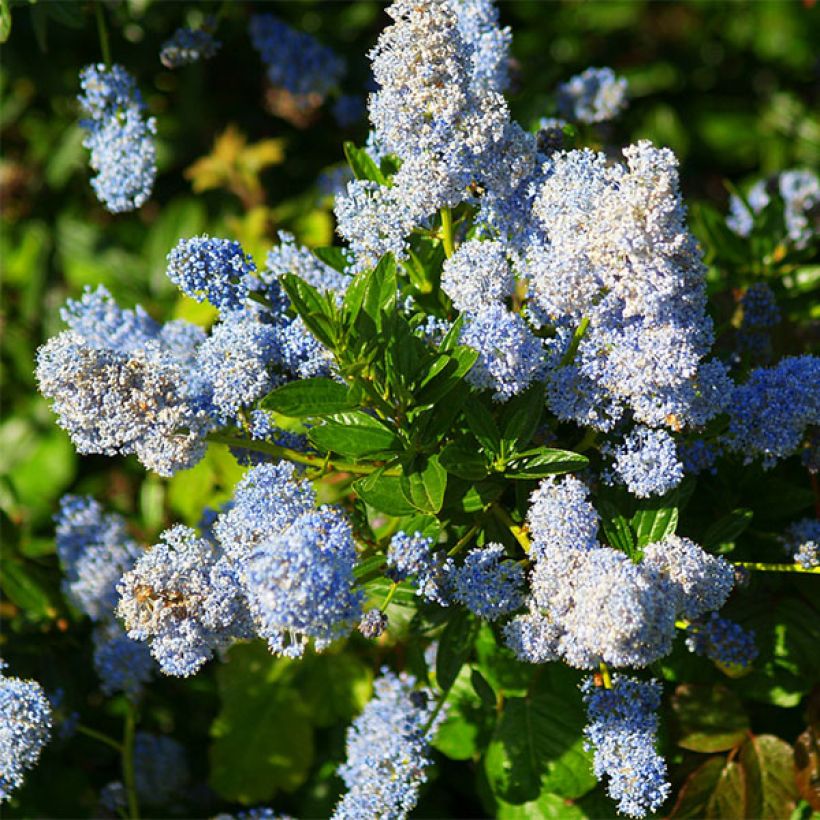

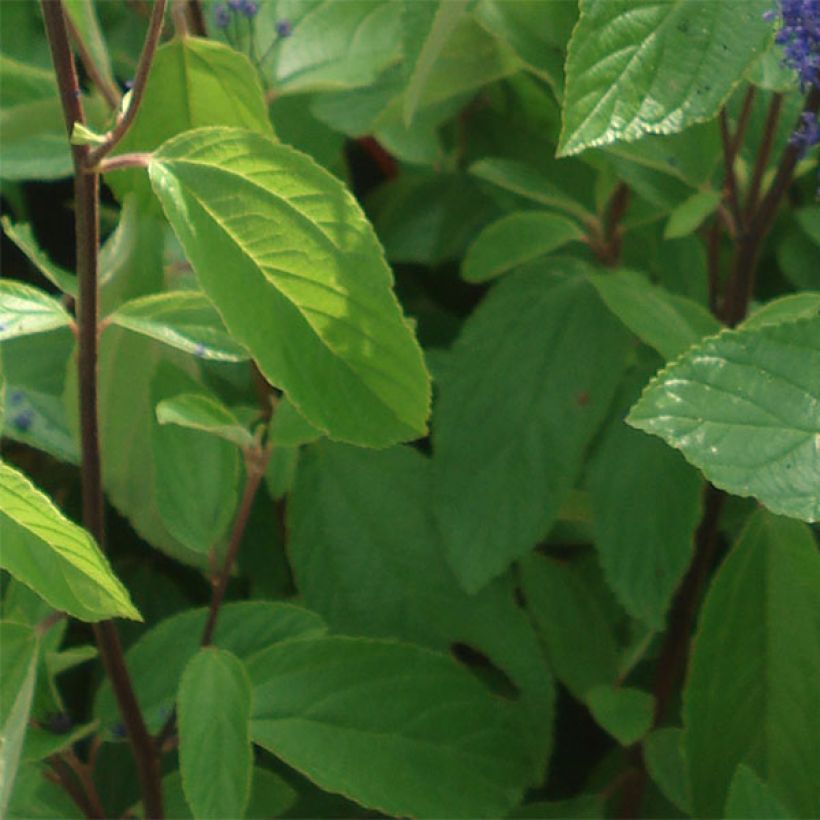

Plant habit
Flowering
Foliage
Botanical data
Ceanothus
x arboreus
Concha
Rhamnaceae
California Lilac
Cultivar or hybrid
Other Ceanothus
Planting and care
Place Ceanothus in a sunny or partially shaded position. Plant them in ordinary soil that should be moist but well-drained in summer. Be aware of cold drafts which the bush does not like. It can be placed near a wall. Plant it throughout the year, excluding frost, mixing your garden soil with compost, coarse sand, perlite, or any material that does not retain moisture. Water generously once or twice a week to promote establishment. Only water twice a month from the third year onwards, and only in case of drought. It is a plant that requires very little maintenance and grows easily as long as the conditions are met. Moisture in the soil during the winter period, as well as in summer, is harmful to the plant. The combination of heat and humidity leads to the development of a fungus that attacks the collar of the plant and will be fatal to it. That's why, in affected soils, it is better to plant Ceanothus on a mound. You can lightly prune the stems after flowering to encourage the plant to branch out. Fertilizer applications are not recommended (just add a little bonemeal at the bottom of the planting hole). Avoid severe pruning.
Cultivation in pots:
Use a light substrate, a mixture of garden soil, coarse sand, and compost. In summer, water abundantly but only when the soil is dry. The plant can be stored in a cool, bright place with little or no heating, protected from heavy frosts over winter. Apply a slow-release fertilizer in spring and autumn.
Planting period
Intended location
Care
-
, onOrder confirmed
Reply from on Promesse de fleurs
Evergreen shrubs
Haven't found what you were looking for?
Hardiness is the lowest winter temperature a plant can endure without suffering serious damage or even dying. However, hardiness is affected by location (a sheltered area, such as a patio), protection (winter cover) and soil type (hardiness is improved by well-drained soil).

Photo Sharing Terms & Conditions
In order to encourage gardeners to interact and share their experiences, Promesse de fleurs offers various media enabling content to be uploaded onto its Site - in particular via the ‘Photo sharing’ module.
The User agrees to refrain from:
- Posting any content that is illegal, prejudicial, insulting, racist, inciteful to hatred, revisionist, contrary to public decency, that infringes on privacy or on the privacy rights of third parties, in particular the publicity rights of persons and goods, intellectual property rights, or the right to privacy.
- Submitting content on behalf of a third party;
- Impersonate the identity of a third party and/or publish any personal information about a third party;
In general, the User undertakes to refrain from any unethical behaviour.
All Content (in particular text, comments, files, images, photos, videos, creative works, etc.), which may be subject to property or intellectual property rights, image or other private rights, shall remain the property of the User, subject to the limited rights granted by the terms of the licence granted by Promesse de fleurs as stated below. Users are at liberty to publish or not to publish such Content on the Site, notably via the ‘Photo Sharing’ facility, and accept that this Content shall be made public and freely accessible, notably on the Internet.
Users further acknowledge, undertake to have ,and guarantee that they hold all necessary rights and permissions to publish such material on the Site, in particular with regard to the legislation in force pertaining to any privacy, property, intellectual property, image, or contractual rights, or rights of any other nature. By publishing such Content on the Site, Users acknowledge accepting full liability as publishers of the Content within the meaning of the law, and grant Promesse de fleurs, free of charge, an inclusive, worldwide licence for the said Content for the entire duration of its publication, including all reproduction, representation, up/downloading, displaying, performing, transmission, and storage rights.
Users also grant permission for their name to be linked to the Content and accept that this link may not always be made available.
By engaging in posting material, Users consent to their Content becoming automatically accessible on the Internet, in particular on other sites and/or blogs and/or web pages of the Promesse de fleurs site, including in particular social pages and the Promesse de fleurs catalogue.
Users may secure the removal of entrusted content free of charge by issuing a simple request via our contact form.
The flowering period indicated on our website applies to countries and regions located in USDA zone 8 (France, the United Kingdom, Ireland, the Netherlands, etc.)
It will vary according to where you live:
- In zones 9 to 10 (Italy, Spain, Greece, etc.), flowering will occur about 2 to 4 weeks earlier.
- In zones 6 to 7 (Germany, Poland, Slovenia, and lower mountainous regions), flowering will be delayed by 2 to 3 weeks.
- In zone 5 (Central Europe, Scandinavia), blooming will be delayed by 3 to 5 weeks.
In temperate climates, pruning of spring-flowering shrubs (forsythia, spireas, etc.) should be done just after flowering.
Pruning of summer-flowering shrubs (Indian Lilac, Perovskia, etc.) can be done in winter or spring.
In cold regions as well as with frost-sensitive plants, avoid pruning too early when severe frosts may still occur.
The planting period indicated on our website applies to countries and regions located in USDA zone 8 (France, United Kingdom, Ireland, Netherlands).
It will vary according to where you live:
- In Mediterranean zones (Marseille, Madrid, Milan, etc.), autumn and winter are the best planting periods.
- In continental zones (Strasbourg, Munich, Vienna, etc.), delay planting by 2 to 3 weeks in spring and bring it forward by 2 to 4 weeks in autumn.
- In mountainous regions (the Alps, Pyrenees, Carpathians, etc.), it is best to plant in late spring (May-June) or late summer (August-September).
The harvesting period indicated on our website applies to countries and regions in USDA zone 8 (France, England, Ireland, the Netherlands).
In colder areas (Scandinavia, Poland, Austria...) fruit and vegetable harvests are likely to be delayed by 3-4 weeks.
In warmer areas (Italy, Spain, Greece, etc.), harvesting will probably take place earlier, depending on weather conditions.
The sowing periods indicated on our website apply to countries and regions within USDA Zone 8 (France, UK, Ireland, Netherlands).
In colder areas (Scandinavia, Poland, Austria...), delay any outdoor sowing by 3-4 weeks, or sow under glass.
In warmer climes (Italy, Spain, Greece, etc.), bring outdoor sowing forward by a few weeks.




































